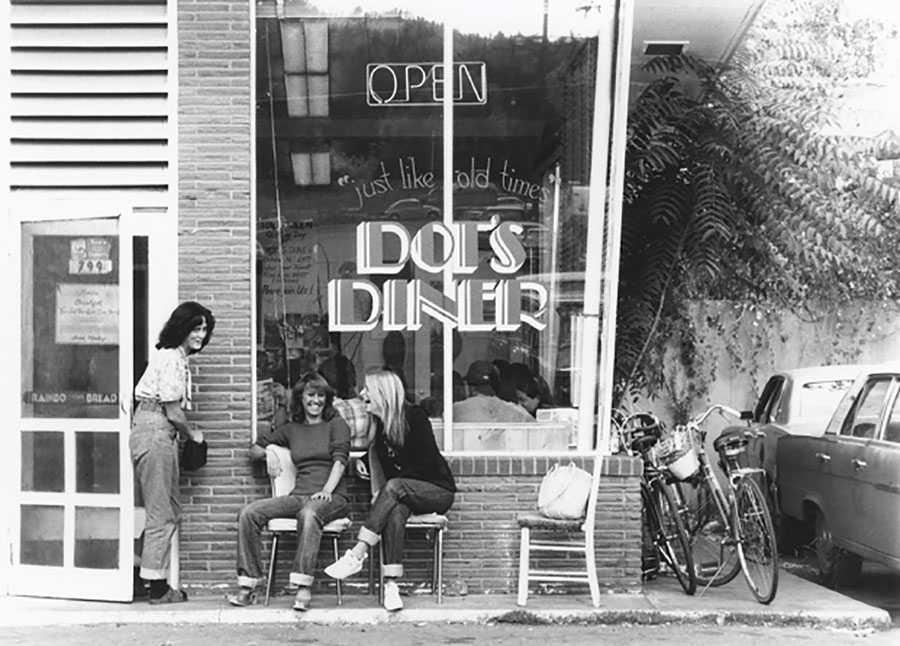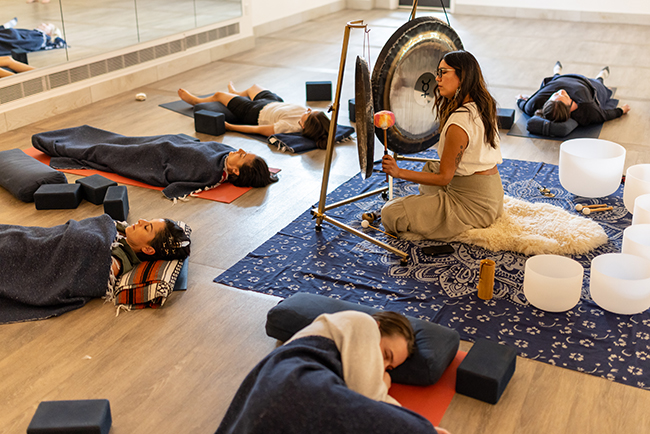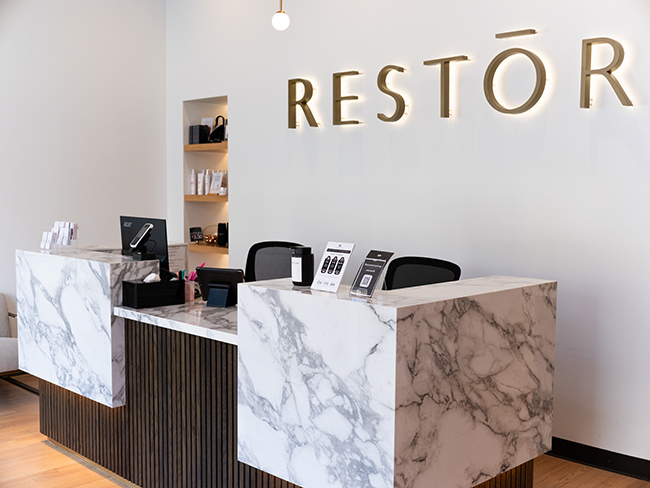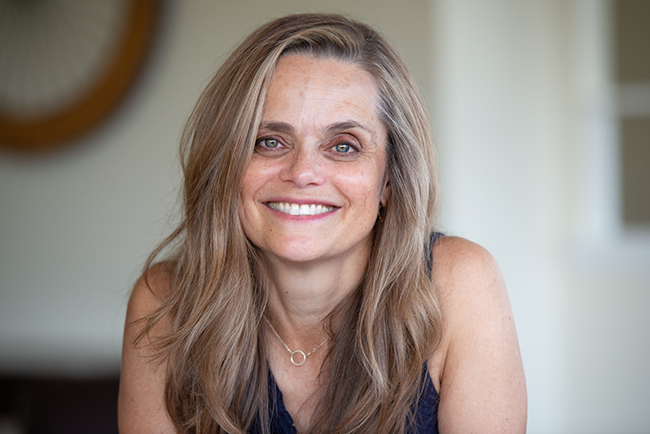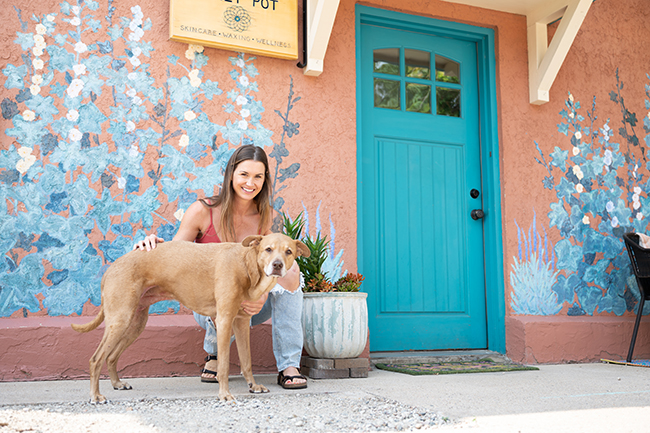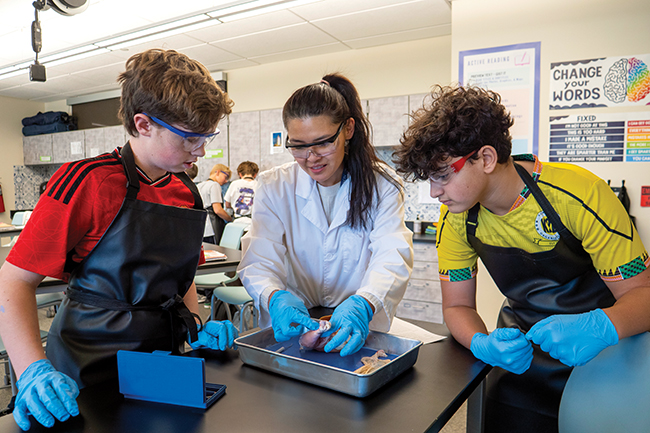Fatal Attractiveness?
02 Dec 2013
Fatal Attractiveness?
How To Choose Safe Cosmetics in an Unregulated IndustryBy Amber Erickson Gabbey Shannon Culek and Kate O’Donnell, both from Nederland, sit around a table with their favorite cosmetics, discussing their simple beauty routines. Culek, a holistically trained nutritionist, says she uses lotion, lip balm and sunscreen. O’Donnell uses sunscreen and natural hair-care products. Unlike most women, they use mascara or lipstick only on special occasions. But like just about everyone, Culek and O’Donnell get overwhelmed trying to figure out what’s safe.
“I don’t know what goes into cosmetics and I don’t think ninety percent of the population does either,” says O’Donnell.
As with the food industry, consumers are asking questions about cosmetic safety. For Culek and O’Donnell, a shift in eating habits paved the way to assess other areas of their lives, including cosmetics. “Massive awareness has been building over the last decade,” says Margie Kelly of the Campaign for Safe Cosmetics, a national coalition dedicated to working with companies, government and consumers to make cosmetics safer.
Kelly, like many women, can’t imagine a world without lipstick. The cultural ideal is to look and feel beautiful, and cosmetics satisfy that desire. “Cosmetics in themselves aren’t dangerous,” Kelly says, “it’s how they’re made.”
Companies can manufacture cosmetics without harmful chemicals, but many are either unwilling to change or deny any harm in the first place. The bottom line is that if consumers continue buying products, companies have no incentive to change. “Even if people know some lipstick has traces of lead, the majority are still buying it. Companies will just continue doing what they are doing if people buy it,” says O’Donnell.
But some consumers are demanding safer alternatives, and a lucrative market is emerging to meet that demand. The problem now, says Kelly, is with the industry and regulation. Large companies oppose regulation and the FDA seems unwilling to take action, making it difficult to find mutually beneficial solutions.
The industry
The federal Food, Drug, and Cosmetic Act of 1938 defines cosmetics as “articles intended to be rubbed, poured, sprinkled, or sprayed on, introduced into, or otherwise applied to the human body ... for cleansing, beautifying, promoting attractiveness, or altering the appearance.” That includes most products applied externally and found in the health and beauty aisles.
In the U.S., cosmetics don’t have to be proven safe before they’re sold. Other countries, especially in the European Union, have strict regulations and ban harmful chemicals. Here, consumers assume they’re being protected, but that is not the case. The industry is unregulated and companies can do what they want. Kelly considers it a “buyer beware” situation. “There are not controlled randomized trials to say [cosmetics] are, without reservation, safe,” says Lisa Scatena, M.D., of Rocky Mountain Dermatology in Boulder.
Although cosmetic companies are required by the FDA to list all ingredients on product packaging, there is a loophole. Fragrance is considered proprietary business information, allowing companies to omit those ingredients from labels. You may think fragrance is just a fancy name for scent, but fragrance could include any number of more than 3,000 chemical ingredients. This means harmful chemicals could be in your products even if they aren’t listed.
How dangerous are cosmetics?
The skin is the body’s largest organ, and just as toxins and sweat leave the body through the skin, chemicals are absorbed into the body through the skin. Almost anything you put on your skin could potentially cause problems, from thyroid disruption to sperm damage, asthma and cancer.
The real risks of cosmetics are largely unknown and vary depending on what products you use, how often you use them and whom you ask. Simply speaking, there’s not enough information or research to define the danger. But think about it: If you use 10 or 15 personal-care and cosmetic products every day, each with a long list of ingredients, you’re getting a lot of exposure.
Research has confirmed that different chemicals have different risks. Some of the chemicals found in cosmetics are known carcinogens, meaning they cause cancer. Others are hormone or endocrine disruptors, causing reproductive or developmental issues such as tumors, birth defects, infertility and learning disabilities. How, specifically, these chemicals affect the body is more of a mystery. Years of cosmetic use, coupled with environmental exposure to other toxins, makes finding the exact cause of cancer or other diseases difficult to pinpoint.
Common ingredients to watch for
Shopping for cosmetics can be confusing enough with all the choices; add in marketing claims and incomplete ingredient lists and it can be downright overwhelming. But for consumers concerned about the risks, a little education goes a long way. The key, Kelly says, is to do your research, know the most toxic chemicals and make informed decisions. Rather than memorizing complex chemical names, Culek tries to find products with the fewest ingredients, and with names she can pronounce.
Even products labeled organic or found at health-conscious pharmacies and grocery stores may not be completely harmless. “Despite high consumer demand for cosmeceuticals with natural or organic ingredients, the notion that these ingredients are safer than synthetic ones is a common misconception,” Scatena says. “There are no scientific data to support this claim. Products labeled ‘natural’ are not always tested and scrutinized more than synthetic products.”
According to the Campaign for Safe Cosmetics, the main ingredients to avoid are the endocrine disruptors triclosan, parabens, phthalates and BPA, and the carcinogen formaldehyde. The tricky part is that some of these chemicals are listed by different names. For phthalates, watch for dibutyl and diethylhexyl. For formaldehyde, look for quaternium-15, dimethyl-dimethyl (DMDM), hydantoin, imidazolidinyl urea, diazolidinyl urea, sodium hydroxymethylglycinate and bronopol.
Watching for those ingredients will give you a good start, but there are other chemicals that aren’t as easy to identify. Be wary of sodium laureth sulfate, artificial colors, petroleum or petrochemicals, and fragrance. Heavy metals, while naturally occuring, are often used as coloring agents in makeup, and can be harmful in excess. Watch for lead, arsenic, mercury, aluminum, zinc, chromium and iron.
Safer alternatives
The easiest way to avoid potential risks is to choose safer products. “It’s not about being radical. Do your research and prioritize what’s most important to you,” says Kelly. With increased consumer demand, “change is coming—safer options are cropping up everywhere.”
A comprehensive resource is the Environmental Working Group’s Skin Deep database, which allows you to browse the safety of your favorite products or brands. The database breaks down what ingredients contribute to each product’s score, and the risks associated with that ingredient. It’s also available as a mobile app. The database’s challenge is obtaining enough ingredient information to give an accurate grade, but it will help you identify problem ingredients and empower you to make informed decisions about products.
The world of safe cosmetics can be overwhelming and frustrating. Start small, take it one product at a time, do the research and make the changes that fit your lifestyle. There’s not enough information or research to quantify the dangers of cosmetics. But think about it: If you use 10 or 15 personal-care and cosmetic products every day, each with a long list of ingredients, you’re getting a lot of exposure.
Quick Resources To check the safety of your favorite products, visit the SkinDeep database: www.ewg.org/skindeep.
To learn more about the cosmetic industry, dangerous chemicals and how to get involved, go tohttp://safecosmetics.org.
To find companies the Campaign for Safe Cosmetics calls champions in the fight for safe cosmetics, visithttp://safecosmetics.org/display.php?modin=50
To check the safety of ingredients in your favorite products, visit the Cosmetic Ingredient Review at www.cir-safety.org.
To see the FDA’s stance on cosmetics, including warnings and recalls, visitwww.fda.gov/Cosmetics/default.htm. —A.E.G.
Clean Manufacturers Close to Home
Boulder County is home to several companies that make personal-care products without the questionable ingredients listed above. They include Sanítas Skincare and Cowgirl Skincare, two lines produced by a company in Louisville, and MyChelle Dermaceuticals, also in Louisville. Sanítas products are available at Pharmaca, Six Persimmons, and many salons, spas and doctors’ offices in the county; Cowgirl is at Pharmaca and Vitamin Cottage. MyChelle products are sold at Pharmaca, Whole Foods, King Soopers, Lucky’s Market, Six Persimmons, Alfalfa’s, Sprouts and Vitamin Shoppe. Mountain Ocean, in Boulder, makes a small line of hair and skin products that are sold at Whole Foods, Ideal Market, Sprouts, Vitamin Cottage, Vitamin Shoppe, King Soopers, Lucky’s Market and and Pharmaca. It plans to release a reformulated sodium laureth sulfate–free shampoo in early 2014. —Mary Jarrett
Amber Erickson Gabbey, M.A., is a freelance writer, natural health enthusiast and registered yoga teacher. She lives in Nederland with her husband, Erik, and puppy, Dude.


